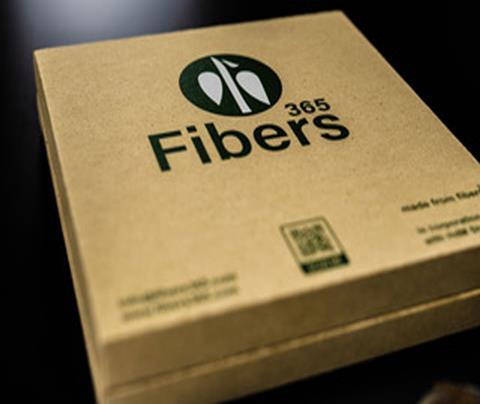
In the latest of our interviews with the finalists of the Sustainability Awards 2021, we speak to Fibers365 about their SteamFiber technology for the production of cellulose pulp from biomass sources such as local farming.
Congratulations on being selected by the international judging panel as a Sustainability Awards 2021 finalist! Could you please introduce your successful entry and what’s innovative about it?
Well, thanks, we were quite enthusiastic when we were informed about this selection.
Processing annual fibers for pulp and paper has a long history, but – despite a huge demand for alternative and sustainable pulp – today it is not common practice.
Fibers365's innovation brings annual fibres back to the top of the agenda. We have developed the perfect concept for the most sustainable production of cellulose pulp from annual plants.
We have created the modular on-farm SteamFiber pulp factory, each with a capacity of 5,000 tonnes of pulp (bdu) per year. The biomass resources originate from local farming, just around 2,500 hectares per plant, available typically within a 20 kilometre radius. Agricultural by-products are the preferred resource.
Our patented SteamFiber technology processes most kinds of cellulose-rich straw and biomass crops in a mild, low water consumption, and chemical-free disintegration process. The cellulose pulp is separated from minor substances, creating a sugar- and nutrient rich feedstock for the farm's own biogas plant.
The bio-energy content of the on-farm produced biogas surpasses the overall energy demand significantly, creating an energy self-sufficient process.
The residual liquid from biogas production, full of essential nutrients and humic substances, is recycled to the fields directly, closing nutrient loops and retaining soil fertility. And finally, one of the by-products of the process is a native lignin cake, ready to create novel bio-products.
Balancing all processes of the SteamFiber factory – from biomass harvest to pulp delivery – this is definitely carbon negative. And this was the target, nothing else.
The farming and biogas structures already exist, as do the biomass resources. Germany provides up to 1,000 possible locations and a resource potential of more than 10 million tonnes of biomass per year. Other countries are even more promising.
We have to integrate farmers and the pulp and paper industry and jointly engage in this business, in a fair partnership.
The first full-scale SteamFiber plant is already in operation, located at a biogas plant in southwest Germany, financed by one of the world's big players in the retail business. A second project will be finished by the end of 2021.
What are the environmental challenges in packaging that your entry addresses, and what impact do you hope it will make?
There are many clever ideas to improve packaging solutions, saving energy and changing materials, but the problem starts with natural resources.
The global demand for packaging materials is permanently increasing. Resources are still taken from tree plantations and forests, whilst annual fibers still are a negligible business.
Ongoing deforestation and wasting fuel on long-distance transportation is a no-go in our fight to stop climate change.
But not only the packaging industry faces challenges.
Renewable energy production from biomass has to become more cost-efficient to be competitive, which demands alternative feedstock to growing special energy crops. Integrated agriculture has to provide food and industrial resources, while retaining soil fertility and biodiversity.
Fibers365 addresses all these topics in one approach, creating a new way to produce high-quality cellulose pulp, sustainably, carbon-negative, regionally, and fully integrated.
In the long run – looking at agricultural residues rotting unused in the fields worldwide in millions of tons – this can be a game-changer for the whole packaging industry.
Within 3 years, Fibers365 will operate on-farm plants producing more than 100,000 tons of cellulose pulp from cereal straw and other biomass. Further on, we hope to double this capacity every year.
Our environmentally unique approach will support the global breakthrough of annual fibres in pulp and paper industry and revolutionize farming worldwide. Every project will contribute to our all future, creating regional added value while saving the planet's resources.
I’d like to ask you about the broader picture beyond your successful entry. ‘Sustainability’ in packaging is multi-dimensional – both in terms of objectives and challenges. Could you comment on the most important roadblocks you identify from your position in the value chain, and the kinds of solutions you would like to see addressing them (e.g. areas of technological innovation, collaboration, regulation)?
Like we said before: the main challenge we recognise is on the resource side.
Whatever packaging solution is re-engineered for a better ecological balance – the first step is to supply the industry with sustainable resources on a large scale, not just a few tons for some showcase projects.
To take this chance and realise our regional farm-based SteamFiber pulp producing plants, we have to join forces: the pulp and paper industry supporting and cooperating on our projects as well as the farmers operating biogas plants re-structuring their operations and participating in SteamFiber facilities.
Authorites – especially those responsible for renewable energy regulations – should support such integrated solutions and open their approach, e.g., to reduce hurdles on the way to a building permit.
But in general, we experience a very positive response wherever we present our projects. This makes us look to the future with great optimism.











